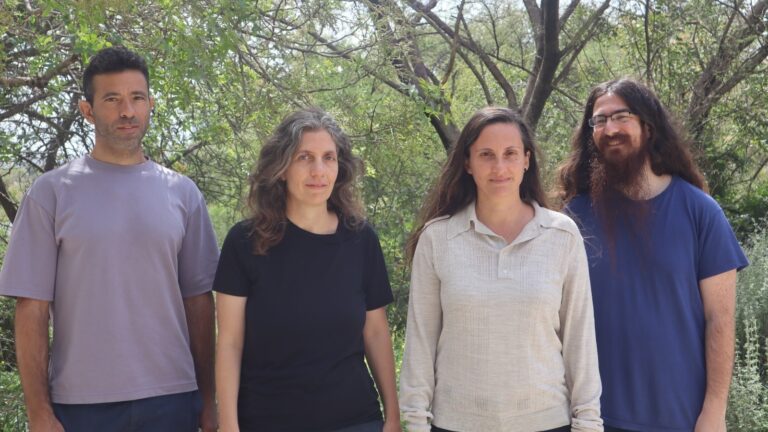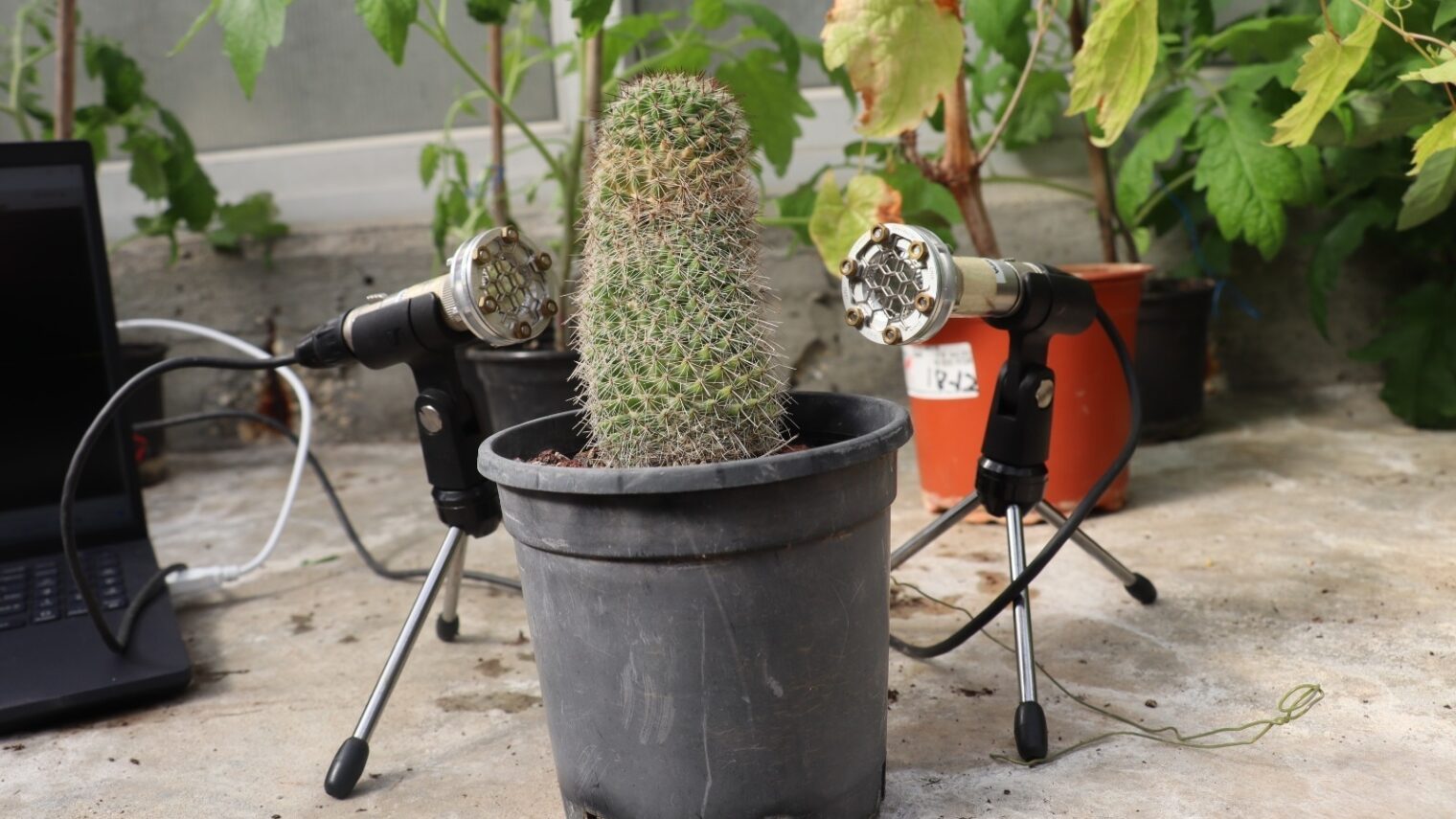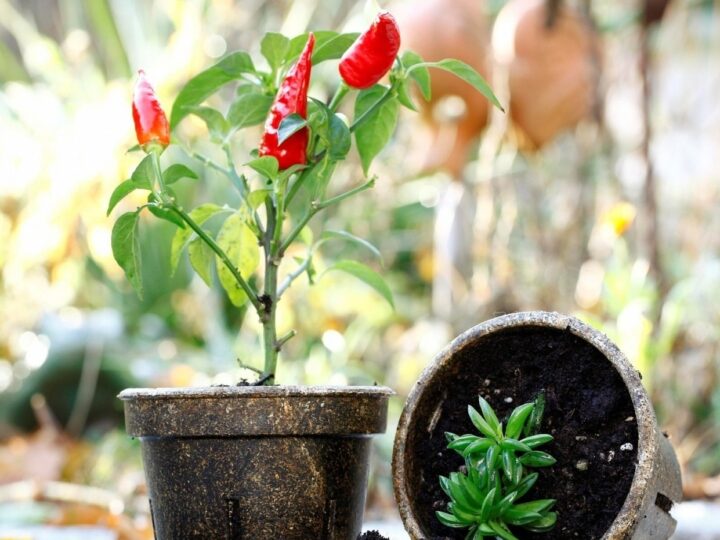Anyone with a green thumb knows that plants like being talked to. Thanks to a first-of-its-kind study, now we know that plants can talk, too. We just can’t hear them.
“In this study we resolved a very old scientific controversy: we proved that plants do emit sounds,” said lead researcher Prof. Lilach Hadany from the Department of Molecular Biology and Ecology of Plants in Tel Aviv University’s School of Plant Sciences and Food Security.
Plants make click-like noises, like the sound of popcorn popping, at a volume similar to human speech but at high frequencies beyond the hearing range of the human ear.
“From previous studies we know that vibrometers attached to plants record vibrations. But do these vibrations also become airborne soundwaves that can be recorded from a distance? Our study addressed this question, which researchers have been debating for many years,” said Hadany.
Who can hear plants?
The findings, published in the journal Cell, suggest that the world is full of plant sounds, and that these sounds contain information – for example about water scarcity or injury.
“We assume that in nature the sounds emitted by plants are detected by creatures nearby, such as bats, rodents, various insects, and possibly also other plants that can hear the high frequencies and derive relevant information,” Hadany said.
“Apparently, an idyllic field of flowers can be a rather noisy place.”
“We believe that humans can also utilize this information, given the right tools — such as sensors that tell growers when plants need watering.”
Due to the commercial potential of using sounds to monitor plant stress without touching them, the researchers submitted a patent application through TAU’s tech-transfer company, Ramot.
Stress signals
The researchers found that plants usually emit sounds when they are under stress, and that each plant and each type of stress is associated with a specific identifiable sound.
At the first stage of the study, the researchers subjected plants — mainly tomato and tobacco, and some wheat, corn, cactus and henbit plants — to stressors such as cutting their stems or not watering them for five days. Other plants they left untouched.
They placed the plants in an acoustic box in an isolated basement with no background noise. Ultrasonic microphones recording sounds at frequencies of 20-250 kilohertz (the maximum frequency detected by a human adult is about 16 kilohertz) were set up about 10 centimeters from each plant.
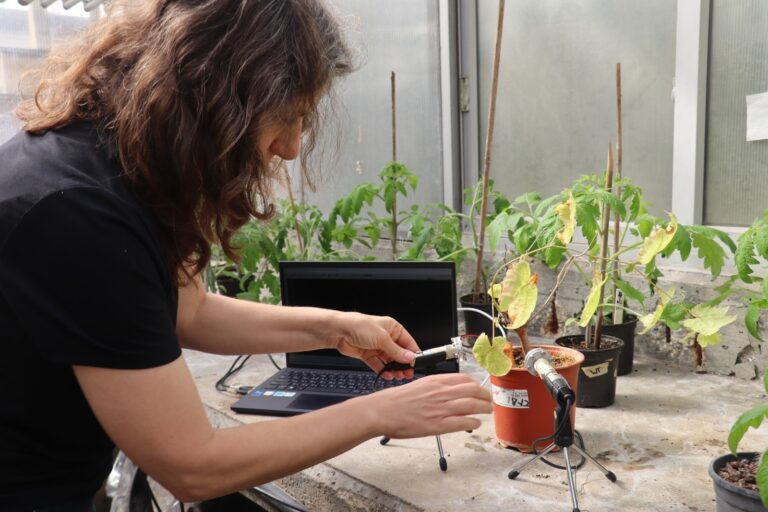
“Our recordings indicated that the plants in our experiment emitted sounds at frequencies of 40-80 kilohertz. Unstressed plants emitted less than one sound per hour, on average, while the stressed plants – both dehydrated and injured – emitted dozens of sounds every hour,” Hadany said.
“Apparently, an idyllic field of flowers can be a rather noisy place. It’s just that we can’t hear the sounds,” she observed.
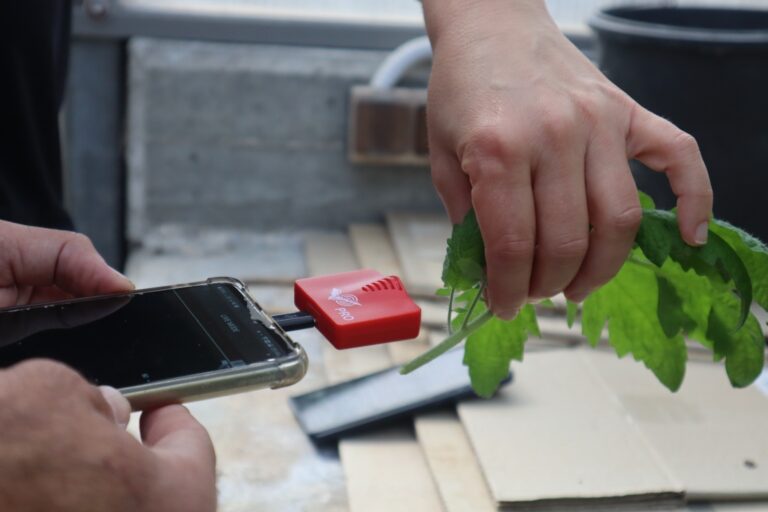
The algorithms identified and classified plant sounds even when the plants were placed in a greenhouse with a great deal of background noise.
In the greenhouse, the plants were subjected to a process of dehydration. Over time, the quantity of sounds they emitted increased up to a certain peak, and then diminished.
Do plants talk to each other?
The recordings were analyzed by specially developed machine learning (AI) algorithms. The algorithms learned how to distinguish among different plants and sounds, and were ultimately able to identify the plant and determine the type and level of stress from the recordings.
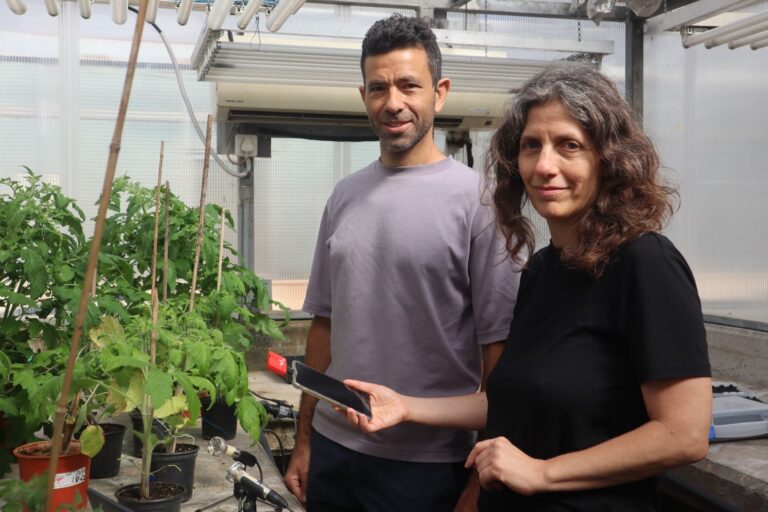
Hadany told ISRAEL21c she does not expect to find any relationship between plants’ stress-induced sounds and the underground communication system by which plant roots emit stress cues to neighboring plants.
“The sounds may be involved in communication but we don’t know that yet. Perhaps under stress they do both — release chemicals and sounds,” she said.
Also unknown is what part of the plant enables the clicking sounds, though the scientists directed their mics to the stem.
Hadany and Prof. Yossi Yovel, head of TAU’s Sagol School of Neuroscience and a faculty member at the School of Zoology and the Steinhardt Museum of Natural History, are continuing their studies to explore the mechanism behind plant sounds; whether plants communicate via these sounds; and how insects detect and react to sounds emitted by plants.
“I’m personally most excited about whether plants respond to each other,” Hadany said. “It’s an open question at the moment and we are testing that.”
Students Itzhak Khait and Ohad Lewin-Epstein, among others, also participated in the study along with researchers from TAU’s School of Mathematical Sciences and Institute for Cereal Crops Research.
